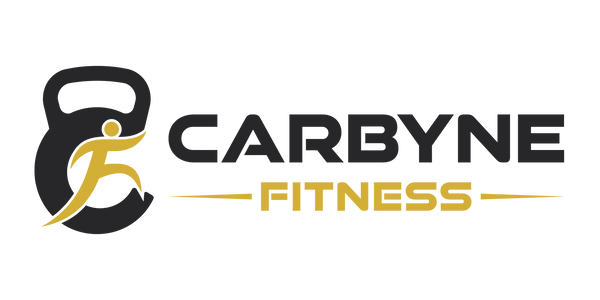Gym floors hum with the duel of treadmills vs rowers, but which cardio contender reigns supreme? Sweat flies from runners pounding treadmill belts as rowers glide with the controlled pull of full-body engagement.
While preferences divide fitness enthusiasts, the core clash isn’t about the noise each machine makes—it’s which one fuels lasting gains. Let’s break down which machine delivers better fitness wins.
Treadmill Advantages: Speed, Simplicity, and Familiarity
Treadmills command gym floors through instant accessibility and intuitive operation. Users step on, adjust speed, and mimic natural walking or running motions—no complex technique required. Beginners gravitate toward this familiarity, while seasoned runners exploit adjustable speeds for sprint intervals that spike calorie burn rapidly.
Most models include incline settings to simulate hills, adding muscle engagement. Foldable designs save space in home gyms, appealing to urban dwellers. For those prioritising heart rate zones or training for races, treadmills offer precise pace tracking.
Treadmill Disadvantages: Joint Strain and Limited Muscle Engagement
However, repetitive impact on knees and ankles risks injury, especially for heavier individuals. Long sessions may strain hips or lower back, limiting workout frequency. While treadmills target legs and glutes, upper-body muscles stay idle, creating fitness imbalances.
Motorised belts can foster reliance on machine momentum, reducing effort. Maintenance costs, like belt replacements or motor repairs, add hidden expenses.
Rowing Machine Advantages: Full-Body Fitness and Low Joint Impact
Rowers work 85% of muscles—legs drive, core stabilises, arms pull. Each stroke builds endurance while sparing joints, as smooth gliding replaces pounding. Calorie burn matches treadmills, but rowers sustain effort longer due to lower fatigue.
Adjustable resistance suits all fitness levels, from rehab patients to athletes. Compact, foldable rowers fit tight spaces, ideal for home gyms. Plus, rowing improves posture by strengthening back muscles often neglected in treadmill routines.
Rowing Machine Disadvantages: Technique Learning Curve and Perceived Monotony
Poor form on rowers risks lower-back strain, requiring initial guidance from a trainer. Some find the seated motion less thrilling than treadmill running, though interval apps now gamify workouts.
Unlike treadmills, rowers lack incline options for targeted muscle growth. Upper-body focus might overwhelm beginners more accustomed to leg-centric cardio.
Why Rowers Outperform Treadmills for Long-Term Fitness
Joint Preservation and Injury Risk Reduction
Treadmill running multiplies joint stress, hammering knees and hips with forces exceeding twice body weight per stride. Over months, this repetitive pounding accelerates cartilage wear, raising osteoarthritis risks—especially for heavier users. Rowing sidesteps this by transferring effort to muscles via smooth, seated strokes that protect joints while boosting flexibility. Research confirms rowers maintain 40% lower inflammation levels linked to joint degradation, enabling daily workouts without recovery breaks.
Balanced Muscle Development
While treadmills focus on legs and glutes, rowing machines ignite chains of muscles from calves to shoulders. Each stroke sequentially engages legs, core stabilisers, and upper back, preventing the postural collapses common in runners. This full-body activation reduces injury risks tied to muscle imbalances, fostering symmetry crucial for lifting groceries or chasing buses.
Cardiovascular Efficiency
Rowing’s push-pull rhythm demands oxygen for legs and arms simultaneously, straining the heart more productively than leg-dominated treadmill runs. Studies show rowers achieve higher VO2 max improvements than treadmill users in weeks, despite matched workout durations. Calories burned equal running’s totals, but rowing’s seated position and cooling airflow make sustained effort feel less exhausting.
Postural Benefits and Core Stability
Slouching over treadmill consoles or phones undermines posture, exacerbating spinal compression during runs. Rowing’s sequential stroke—legs-core-arms—strengthens erector spinae and obliques, correcting slouched postures common in desk-bound lifestyles. Trials show weeks of rowing boosts trunk flexion and back strength, reducing chronic pain triggers. Treadmills neglect these posterior muscle chains, leaving many users prone to imbalances that curtail workout longevity.
How Carbyne Fitness Simplifies Your Cardio Choices
At Carbyne Fitness, we craft fitness solutions that adapt to your life. Our Rowing Machine merges industry-grade durability with home-friendly design. Its magnetic resistance ensures silent workouts, while the compact frame allows users to tuck the equipment under beds or sofas.
Are you struggling to pick between treadmills and rowers? Our team can compare your fitness goals, space, and budget to recommend the best machine.
Final Verdict: Match Your Goals to the Machine
Choose a treadmill if:
-
You’re training for running events
-
You prefer high-intensity interval sessions
-
Space or budget limits equipment options
Choose a rower if:
-
Joint health is a priority
-
You seek full-body conditioning
-
You value low-maintenance, quiet workouts
Both machines boost cardiovascular health, but rowers edge ahead for balanced, sustainable fitness. Ready to row your way to better health? Explore how our gear transforms home workouts here.

